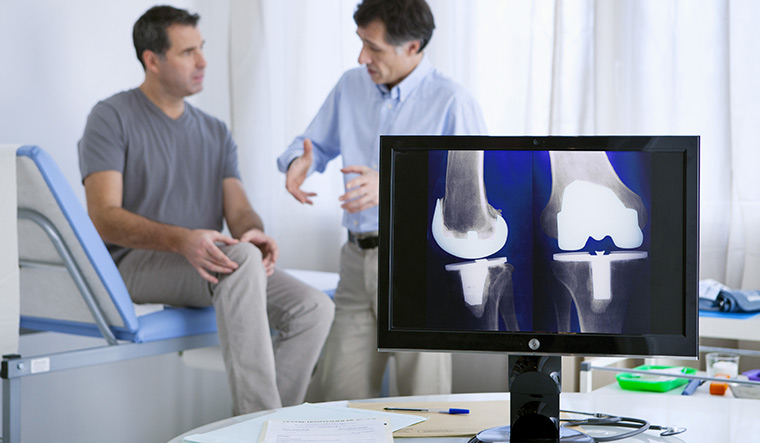Knee problems can be unusually painful and life-altering, especially if they come with other complications like arthritis. It is estimated that about 2 per cent of people above 55, affected by arthritis, require knee replacement.
Knee problems start much earlier for people affected by arthritis and other connective tissue disorders. Whether the arthritis is age related or of the inflammatory type, the end damage to the joint causes significant pain and difficulty in even walking.
Early arthritis can be managed by physiotherapy, analgesic drugs, cartilage-regenerating agents and weight reduction. But, it is the endpoint arthritis that needs knee replacement. The operation alters the quality of the patient's life. The timing of the surgery depends on the extent of the pain and disability.
The procedure is now common and has a high degree of success. But, this has become possible only because of constant improvement in surgical procedures and technology. Two technologies have proven immensely successful in enhancing the accuracy of knee-replacement surgeries and in also improving the rehabilitation process. Gyroscope-based computer navigation helps the surgeon place the implants accurately, whereas operating without using the tourniquet reduces post-operative pain, leading to early rehabilitation. Pain is now managed by injecting a ‘pain control cocktail’ (an amalgamation of specialised drugs) during or around the operation period. Also, a ‘cocktail’ of simple drugs is used to control post-operative pain. Some special drugs are used to reduce blood loss after the surgery.
Gyroscope-based computer navigation for total knee replacement
Precise positioning of knee-replacement implants is critical to achieve pain-free movements with normal gait. Done correctly, it can last the patient at least two decades. But, imprecise positioning can loosen the bond between bone and replaced implants very quickly, leading to pain and another surgery.
The aviation industry uses the gyroscope to earmark aircraft position precisely. Coupled with an accelerometer, which is used to indicate movement pattern at a located position, aircraft are guided with pin-point accuracy. The same principles have been used for knee replacement in India for about four years, with resounding success. The beauty of the situation is that engineers and surgeons have combined to create this wonder, which is accurate, user- friendly, reproducible and also economical.
Gyroscope-based iAssist system
Developed by a company headquartered in the US, this system helps the surgeon locate the centre of the hip, knee and ankle joints in realtime on the operation table. The surgeon then places the implants at 90 degrees to the line joining these three joints, thus avoiding any shear stress at bone-implant interface. Implants are positioned close to patient’s own anatomy, which differs from person to person. Gyroscope-based navigation not only helps in perfect placement of implants, but also reduces risks of serious complications like bone marrow particles or blood clots travelling to and causing problems in the lungs and brain. Also, with this technique, blood loss is significantly reduced and single knee replacement can almost always be done without any blood transfusion.
It is a user-friendly technique requiring a computer, like a small laptop, and two pods. The portable system works with Wi-Fi, which eliminates the line-of-sight problem that cropped up with earlier infrared-based systems.
After knee replacement, the patient can expect to walk with support in a day. If only one knee is operated on, the patient can walk without support within four weeks. If both knees are operated on simultaneously, it could take six weeks.
The writer is senior consultant, joint replacement, and spine surgeon, Indraprastha Apollo Hospitals.


